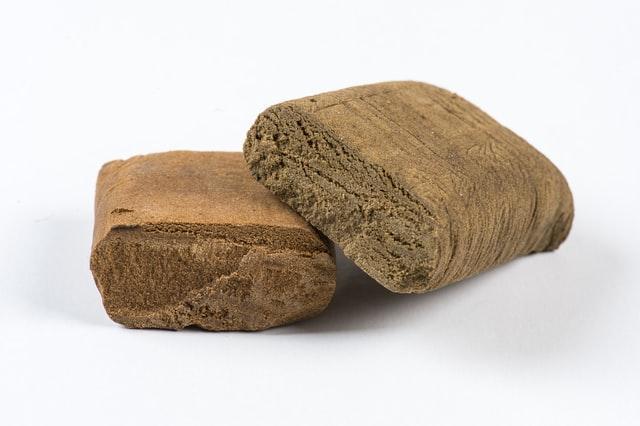How is Hash Made
Posted 2 years ago by Ian Shutts

Hash is a potent cannabis concentrate that is processed into a solid cake. It’s a popular choice for people who are looking for a powerful high, in a format that can be consumed in a variety of ways. Many consumers are drawn to hash over marijuana simply because it requires less paraphernalia to prep and consume.
To prep the hash, users separate the desired amount from the brick or cake, briefly expose it to an open flame (to make crumbling it easier), and put the crumbled bits into a dab rig or tool. Since it’s compressed, it can be discreetly carried around in a pocket or purse and prep requires no more than a lighter and pipe.
For new cannabis consumers, hash — like shatter and budder — can be hard to get around, unlike cannabinoid isolates or infused edibles. In this post, we’ll briefly go over what exactly hash is and the different processes used to make it.
What is Hash, and Where Does It Come From?
Hash is a cannabis product that most people recognize as a brownish cake that sometimes leaves fingertips stained. Traditionally, most hashish was produced in Nepal and other Asian countries, as well as from Latin America and numerous places in the Middle East.
Hash can come from marijuana strains that have high tetrahydrocannabinol (THC) content, or other cannabis plants that have more cannabidiol (CBD). Before purchasing cannabis products like hash, make sure that it falls within the legal limitations for your locale. For example, the UK has very strict regulations on THC content, so buying products from a reputable company like Hemp Hash (which is certified to be legal) is a safe option.
How Cannabis Becomes Hash
Hashish, most commonly known as “hash,” is derived from kief (the dried resin of the flowers of mature but unpollinated female cannabis plants). The crystals that form on these flowers are called trichomes; this is what the resin is heavily composed of. Trichomes are harvested using two primary methods:
- dusting off the powdery resin by hand, or by mechanically beating or shaking the trichomes off the plants
- submerging the flowers in icy water then using fine sieves to remove the separated trichomes that float to the top
The second method requires the collected trichomes to be dried before further processing – this creates “bubble hash,” which gets its name because it actually bubbles when exposed to flame.
The collected kief is typically pressed into cakes or blocks, which can be broken up and smoked in pipes, vaped, or mixed with marijuana in joints. Hash can be soft and pliant or brittle and stiff, depending on the process used to make it. Ready-to-use hash can come out brown, green, yellow, blonde, or even red in color.
Two Less Common Types of Hash
We previously discussed how to produce bubble hash and the hash you’ll most commonly find in dispensaries, but here are two novelty hash types that are also worth looking into:
Hand-Rolled Live Resin Hash is from India and Nepal. The process is very labor-intensive and involves manually rubbing live cannabis buds between the processor’s hands for hours. This causes the trichomes to eventually form a thick, dark resin that is gathered into balls or sticks. The resulting hash has a creamy texture that is comparable to chocolate truffles.
Dry Sift Hash comes from the Middle East – primarily Afghanistan, Lebanon, Turkey, Pakistan, and Morocco. Making it involves gently sieving dried trim and cannabis buds through fine-mesh screens. The process applies gentle friction which helps to separate the trichomes into a light colored kief, however the resulting compressed bricks often come out red or black.
Active Ingredients
Hash is a cannabis concentrate that’s composed of compressed or purified stalked resin glands called trichomes. Research confirms that “glandular trichomes are the richest source of THC- and CBD-forming metabolites and fragrance-giving terpenes,” which is what consumers have long suspected.
THC, CBD, cannabinol (CBN) and tetrahydrocannabivarin (THCV) are the primary active cannabinoids in hash. THC makes up around 10 to 15 percent of most marijuana-derived hashish, while marijuana itself is actually less THC-dense. This is why many people looking for a more potent high often prefer hash to traditional bud.
Hash can also be used for cooking. Since it’s essentially dried, compressed trichomes with the consistency of a bullion cube, it’s soluble in things like oils, melted butter, or cream and milks, meaning it can be very well incorporated into brownie mix, cookie dough etc. Hashish can also be further processed and made into hash oil, which is a gooey substance that many people use for dabbing and with e-cigarettes.